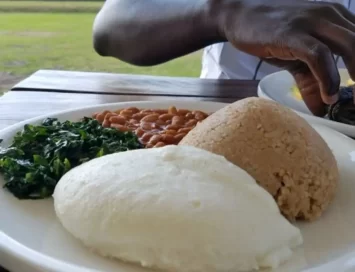Ugandan cuisine is a vibrant tapestry of flavors, influenced by the country’s diverse ethnic groups and rich agricultural heritage. At the heart of many traditional Ugandan dishes lies Kyekyo maize flour, a versatile ingredient that forms the cornerstone of the country’s culinary landscape. In this blog post, we’ll explore the cultural delights of Ugandan cuisine and the integral role that Kyekyo maize flour plays in creating these beloved dishes.
Exploring Uganda’s Culinary Heritage
Uganda, often referred to as the “Pearl of Africa,” boasts a rich culinary heritage that reflects its diverse cultural tapestry. The country’s cuisine is characterized by its use of fresh, locally sourced ingredients and a harmonious blend of flavors and spices. From hearty stews to savory snacks, Ugandan cuisine offers a wealth of delicious options for food enthusiasts to explore.
Native Foods of Uganda
One of the defining features of Ugandan cuisine is its reliance on native foods and ingredients that are abundant in the region. Staples such as maize, millet, cassava, sweet potatoes, and bananas form the foundation of many traditional dishes. These native foods are not only nutritious but also deeply ingrained in the cultural fabric of Ugandan society.
Kyekyo Maize Flour: The Unofficial National Dish
In Uganda, one dish stands out as the unofficial national dish: ugali. Also known as posho or pap, ugali is a thick, starchy porridge made from Kyekyo maize flour and water. It is a staple accompaniment to many Ugandan meals and is often served alongside hearty stews, vegetables, or grilled meats. Ugali is cherished for its simplicity, affordability, and ability to provide sustenance to millions of Ugandans across the country.

Starch Foods in Ugandan Cuisine
Starch foods play a central role in Ugandan cuisine, providing a source of energy and sustenance for the population. In addition to ugali, other popular starch foods made from Kyekyo maize flour include obusuma, a thicker version of ugali often enjoyed in Western Uganda, and kawunga, a fermented maize and millet porridge that is a favorite in the Eastern region.
Cultural Significance of Kyekyo Maize Flour
Kyekyo maize flour holds immense cultural significance in Ugandan society, serving as a symbol of unity and sustenance for families and communities across the country. Its versatility allows for a wide range of culinary creations, from simple staples like ugali to more elaborate dishes like mandazi (maize flour doughnuts) and rolex (a popular street food made with maize flour chapati and eggs).
Conclusion: Celebrating Ugandan Cuisine with Kyekyo Maize Flour
In conclusion, Kyekyo maize flour plays a vital role in preserving and celebrating the rich culinary heritage of Uganda. From humble staples like ugali to festive delicacies like mandazi, Kyekyo maize flour is at the heart of many traditional Ugandan dishes, offering a taste of the country’s cultural diversity and culinary ingenuity. As we celebrate the cultural delights of Ugandan cuisine, let’s savor the flavors of Kyekyo maize flour and the timeless traditions it represents.




